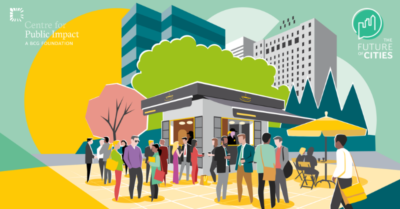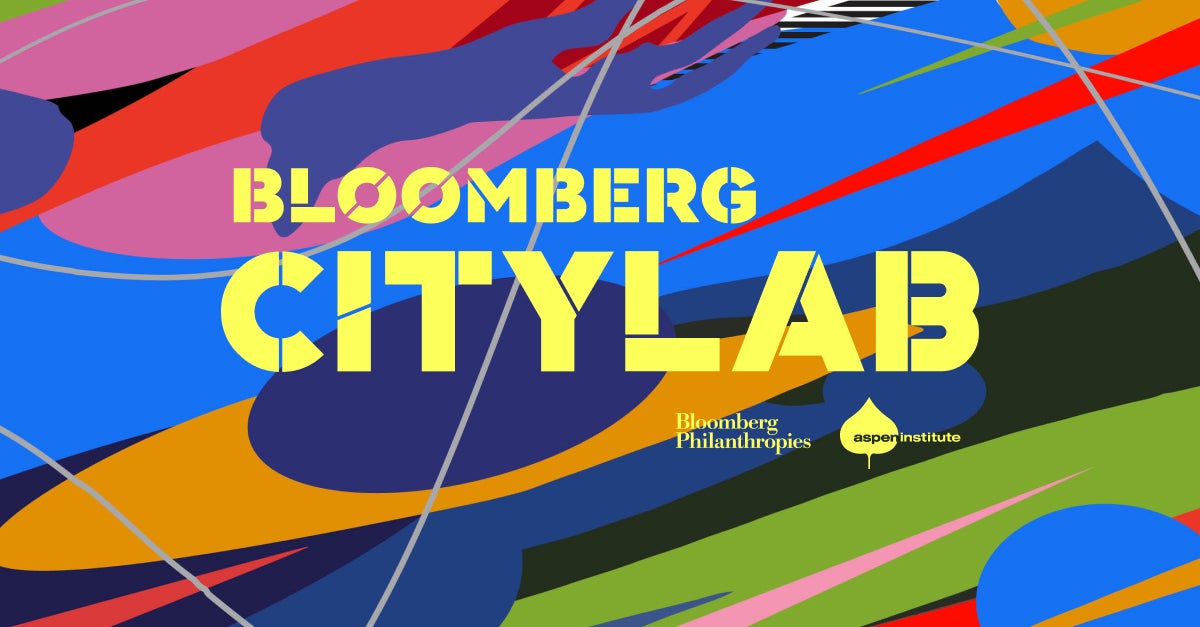What we’re working on & talking about:
Next month, we’re hosting an event on mission-driven innovation in cities with The Centre for Public Impact. We’ll talk more about the findings from CPI’s new handbook, which we collaborated on, and highlight what cities like Austin and Philadelphia are doing to innovate towards greater inclusion.

We’ll be in Memphis in late April for the Building Opportunity For All forum and a workshop afterwards for leaders from Arlington (Va.), Cleveland, Fresno, Kansas City, Memphis, Milwaukee, and Minneapolis & St. Paul on achieving shared prosperity.
And we close out the month with a discussion April 30 on one of our favorite topics, the future of Detroit, in a conversation with Rip Rapson of the Kresge Foundation and Mayor Mike Duggan at Cooper Union/Citi Mayoral Forum in New York City. More information on the event will be available online soon.
In case you missed it, What Works Cities had a great post a few weeks ago about scaling questions and processes, not “solutions” across cities. Nesta posted this smart piece about what innovators get wrong, which reinforces what we’re learning from our work in technology and procurement: it matters who makes things.
What we’re thinking about:
A few weeks ago, I had the privilege of being in a meeting with Maria Rosario Jackson, of the Kresge Foundation and Arizona State University. She asked the participants to consider, “Are we challenging orthodoxies?” in the project we were discussing. Here are a couple of orthodoxies I’d like to challenge in my work.
To solve public problems, focus on policy: Policy promises so much. It scales! It describes and depends on a streamlined world, subject to rational action, where cause and effect are neatly legible. That is not the messy, unpredictable world of cascades of unforeseen interactions between policies in one sphere and those in another in which we actually live. Policy is to actual change as a blueprint is to an actual building: it looks great on paper, especially to the people with the technical training and expertise to understand it. The challenge is in making it something legible and useful to everyone, aka implementation.
Implementation doesn’t scale. Implementation is where humans show up as we are: limited, fearful, distracted, curious, ambitious, and flawed. Implementation is really, really hard. (See the What Works Cities post linked above.) That’s all the more reason the field of urbanism should spend as much, or, actually, much more, time and attention on process and implementation as on new policy ideas. It doesn’t yet, although What Works Cities, Results for America, GovEx, iTeams, Denver’s Peak Academy and others are working hard to change that.
Before people like me dive into creating a new policy, we should ask: why didn’t the last efforts to solve this problem work? Do we need to feed another policy into the same implementation process, or do we need to change the process?
For excellent examples of how places are thinking about new processes to invigorate public space, see the Reimagining the Civic Commons case studies.
Government and public administration should be about the head, not the heart: In 2014, Garlin Gilchrist, Jr., now the lieutenant governor of Michigan, said something at a roundtable discussion that has completely changed my approach to my work: “The innovation we need is innovation in relationships.”
This follows from a focus on implementation, which itself depends on relationships within government and between government and residents. How can we improve and honor those relationships? How can we elevate and train for relationship-building skills, and bring an ethic of care into government? What combination of data, accountability, and rules, and kindness, care, and compassion will support increased trust between people inside and outside of government?
There are very good reasons why experts in previous eras promoted a rational, bureaucratic, standardized approach to how government officials treated residents. It seemed like the best way to eradicate arbitrariness, favoritism, prejudice, and corruption, all of which undermined government legitimacy and degraded some residents. Similarly, there were good reasons why, more recently, local government leaders sought to imbue a “customer service” approach, prioritizing efficient delivery of services.
But, as Boston’s Beta Blocks project proclaims on their website, “Efficiency is not democracy.” We need efficiency, but we also can make space for what Eric Gordon calls “meaningful inefficiencies,” or a way “to play within and with rules, not simply to play out prescribed tasks.” That might mean digging into the fears of local government employees — their fears that new policies or processes will cost them their jobs or devalue their expertise or put them into uncomfortable situations (no one wants to be disrupted). It might mean treating the people on both sides of a regulatory transaction as imperfect human beings who bring weird bundles of needs and yearnings to the negotiating table, and being willing to talk about those weird bundles, not just the statute and the business model.
Signs of change: In Baltimore and Tulsa city government, data is a relationship building tool. Grayce Liu, the General Manager of Los Angeles’ Department of Neighborhood Empowerment, trains her team in non-violent communications techniques. Practitioners in government, business, and non-profits are leading with values, using tools as expressions of values, and getting vulnerable in co-creation.
Do the orthodoxies I’ve identified resonate with you? Are these practices being challenged more widely than I realize? What orthodoxies do you want to challenge in your place or in your practice? Tweet @AspenUrbanInnov to let us know.
All best,
Jennifer
Interesting in receiving the Center for Urban Innovation’s monthly newsletter? Subscribe here.
Past newsletters can be viewed here.
